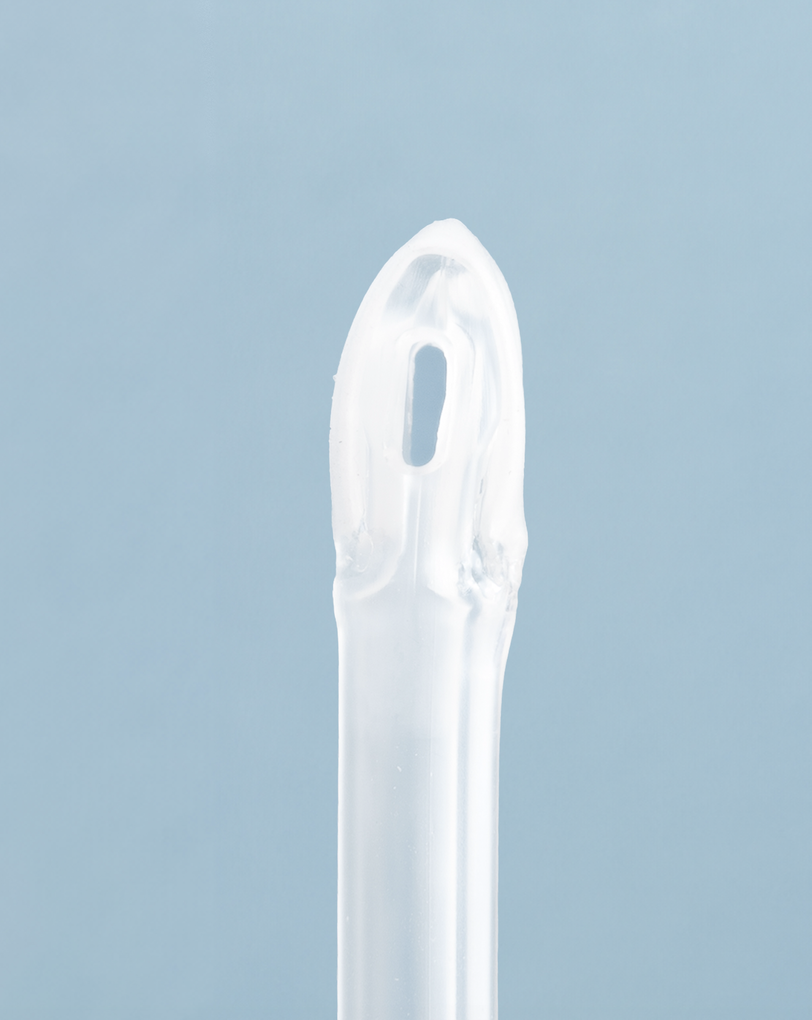The FLUME® catheter has the same basic insertion and removal technique as a standard Foley catheter, but it is distinguished by:
- its distinctive balloon that envelops the catheter tip upon inflation.
- drainage holes that are inset and protected below the balloon.
Tapered form for insertion
The soft balloon material is folded over a tapered tip, which provides a smooth profile during insertion and helps to keep the drainage eyes clear during advancement.
No learning curve for Foley catheter users
The FLUME catheter is intentionally designed to be as familiar in configuration and operation as a Foley catheter. It is formed with a dual lumen tube (A). The catheter is advanced through the urethra or a suprapubic channel until the tip is in the bladder, indicated by urine commencing to flow through the drainage funnel (B) to which a drainage bag can be connected. A pre-filled syringe is connected to the luer valve (C) and used to inflate the retention balloon (D). For removal, a syringe is attached to the luer valve and used to deflate the balloon. No additional training required!
When urine flows during insertion, the FLUME balloon is safely in the bladder
The FLUME catheter’s drainage holes are located at the base of the balloon. This means that as the catheter is advanced and urine begins to flow, the clinician can be assured that the balloon is in the bladder and can be safely inflated.
With Foley catheter placement, it is common clinical practice to advance the catheter an additional inch once urine starts to flow—or advance to the “hilt”—before inflating the balloon. Not doing so could result in premature balloon inflation in the urethra. While not necessary, it is perfectly safe to use either of those practices with the FLUME catheter.





